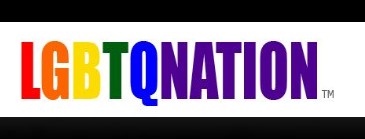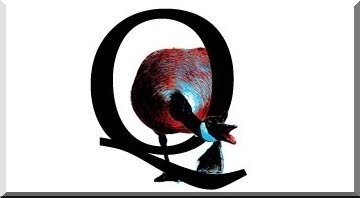It's likely not on your calendar, although it should be, but today, Monday, September 27, marks National Gay Men's HIV/AIDS Awareness Day — a perfect day to go out and get tested.
"While HIV/AIDS certainly isn't a "gay disease," men who have sex with men remains one of the most at risk populations: the CDC reports that 1 in 5 of men living in urban areas are HIV-positive and about 44% are unaware. Jeffrey Crowley, director of the White House Office of National HIV Policy office, remarked, "We see large numbers of annual infections. We see very high relative risks compared to other groups, and most disturbing of all, unlike other groups, we see rising infection rates."
From Presidential Deputy Director For Public Engagement and LGBT Advisor to The President, Brian Bond:
Today is National Gay Men’s HIV/AIDS Awareness Day. For me, every day is an “awareness day” about HIV/AIDS. I feel it is important for me to talk about it, because I am increasingly concerned that many in the LGBT community don’t. I am worried about the kids out there and the generation that hasn’t seen the devastating impact of this epidemic the way my generation has. Now more than ever we need to be talking about HIV/AIDS. Just a few days ago The Centers for Disease Control and Prevention (CDC) published new heartbreaking data showing that one in five gay and bisexual men in 21 major US cities are living with HIV. I am one of those men. I have been living with HIV since 2001.
I have the privilege of serving as the Deputy Director of the White House Office of Public Engagement and President Obama's Liaison to the LGBT community. I want to share a personal perspective on the importance of the recently released National HIV/AIDS Strategy for the United States that was issued by the Obama Administration in July. While I work closely with the Office of National AIDS Policy (ONAP), I was not directly involved in writing the plan, but I clearly have a personal stake in the mission.
The Strategy provides a vision for America that puts saving the lives of gay and bisexual men front and center in our national plan for ending HIV/AIDS through preventing new HIV infections, increasing access to care, and reducing HIV-related health disparities. Not only is the Strategy the first comprehensive plan for responding to the domestic AIDS crisis, it is perhaps the first time that our national policy dialogue could be so forthright about the disproportionate impact of HIV among gay and bisexual men. While we have great HIV leaders across the Federal government, this honesty, grounded in the latest data results from President Obama's leadership and his commitment to ensuring that Federal policies are based on facts about who is most affected and what programs and policies work most effectively.
Gay and bisexual men make up roughly 2% of the US population, but we account for 53% of new HIV infections. We are the only group where HIV infection rates are rising.
These statistics are shocking and they demand a stronger, more focused national response that includes Federal leadership, combined with new levels of commitment and focus at the State and local levels. These data also demands a reinvigorated commitment to ending HIV/AIDS from the LGBT community. We all have a responsibility to reverse that trend.
I encourage all of you to read the Strategy and Federal Implementation Plan. In addition to describing the challenges, it presents a roadmap for responding that includes increased attention on high risk communities including gay and bisexual men, along with Transgender Americans, Black Americans, Latino Americans and substance users. The Strategy also calls for new efforts to reduce infections, and calls for us to take new steps to end stigma and discrimination. In the President’s budget proposal for next year (that begins on October 1st), he also proposed a new initiative at CDC to take a more holistic approach to preventing HIV in the LGBT community with promoting sexual health and preventing sexually transmitted infections.
There is a lot to be done, but I have seen firsthand that our President and his whole Administration are committed to this task - working in partnership with the LGBT community and others. I feel like we all have a responsibility to do this for the kids out there, and also in the memory of those who have fought this fight before us. There is barely a day that goes by that I don’t think of my dear friend, Bob Hattoy, an activist and appointee in the Clinton Administration that helped shine a light on this epidemic. He is for me a constant reminder of the work ahead of us and the responsibility we all share.






















1 comments:
"There's a lot to be done..." There sure is, like get your facts a little more accurate: "Gay and bisexual men make up roughly 2% of the US population..."
Who did the counting on that?
I am getting really tired of seeing these minimalist percentages of the population being accepted and promoted as an accurate representation of the numbers of gay men in the population.
Even if the 2% figure was accurate, which I don't believe it is, the actual number of men who indulge in homosexual acts is much higher, but that requires the statistic's references to be to be defined and we aren't seeing that being done rationally in recent times.
Misrepresentation of facts and figures is something we might expect from the far right, it is the area of their expertise. When we accept the presentation of such figures as claimed here, we deny the range of human sexuality, the diversity of human experience and minimize the significance of HIV as a universal problem in our species.
In this regard the Strategy and Federal Implementation Plan is a welcome initiative, but please don't fall for the underestimation of the actual numbers of people who experience the natural expression of intimacy with the same sex. To do that is to put the above plan at a severe disadvantage and that endangers everyone.
As the plan recognizes, "Success will require the commitment of all parts of society, including State, tribal and local governments, businesses, faith communities, philanthropy, the scientific and medical communities, educational institutions, people living with HIV, and others." and that patently means acceptance of diversity, not discrimination against minorities by any of the above groups.
Specific targeting areas of the population for treatment and awareness of HIV is acceptable and welcome, but misrepresenting their numbers undermines the extent of the success of the plan.
Post a Comment